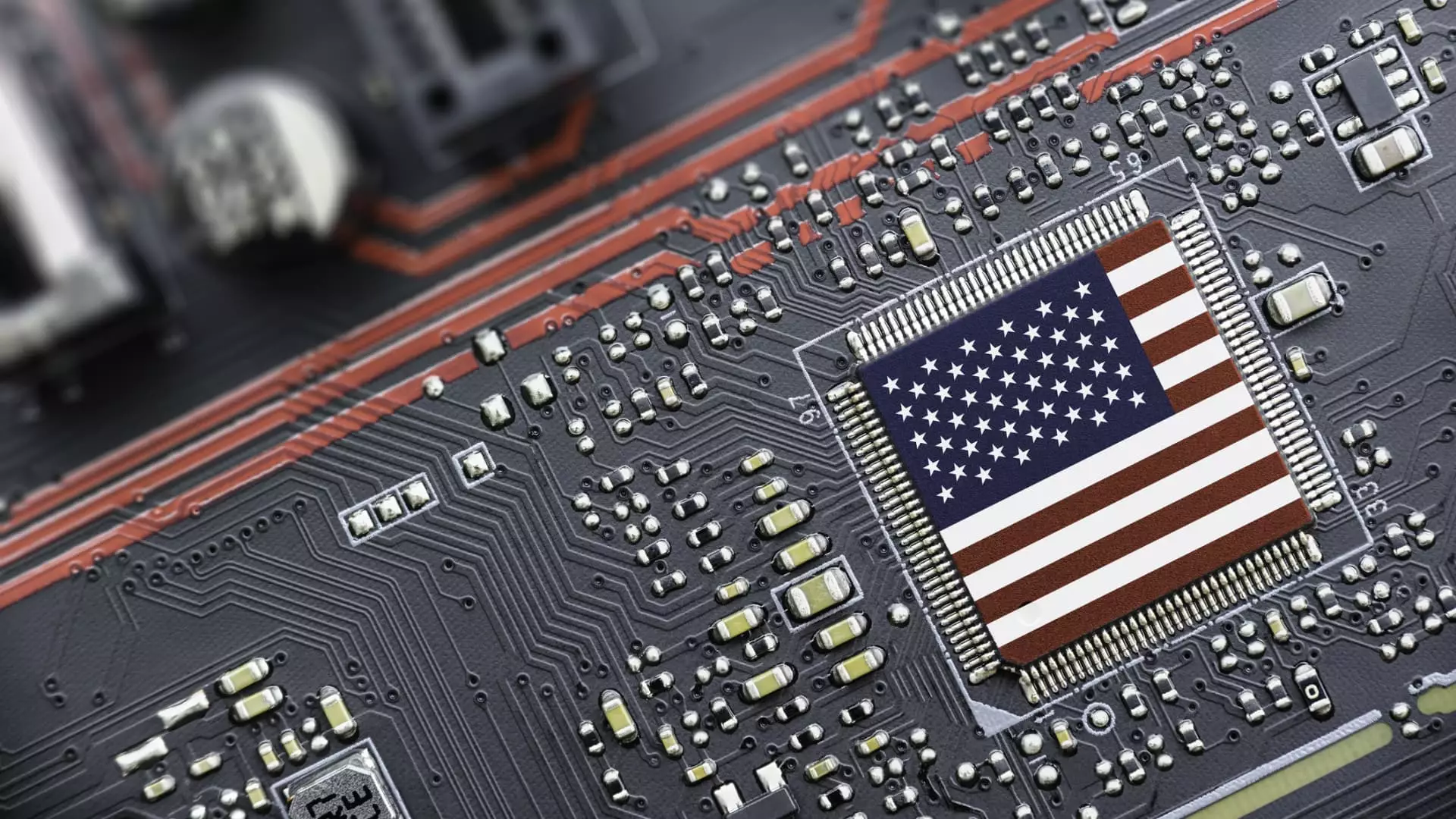The U.S. Commerce Department’s recent announcement regarding the initiation of a national security investigation into semiconductor imports signals a pivotal moment in the landscape of American manufacturing and technological sovereignty. This investigation, which seeks to delve into the viability of enhancing domestic semiconductor production, aims not only to curb reliance on foreign suppliers but also to reinforce national security measures in an age marked by increasing geopolitical tensions. The implications are profound, as semiconductor technology underpins nearly all modern electronics, positioning this investigation at the heart of the ongoing global trade conflicts.
President Donald Trump’s previous statements regarding tariffs hinted at an intent to protect U.S. manufacturing; however, the assurances of exemptions on certain electronic imports may now be put to the test. By maintaining a firm stance on addressing the semiconductor sector, the Trump administration seeks to ensure that tariffs won’t merely be a transient measure. Instead, they aim to foster a long-term strategy that reflects an understanding of the critical role semiconductors play in both technology and national defense.
Understanding the Semiconductor Ecosystem
The semiconductor supply chain is intricate, involving various critical components such as silicon wafers, chipmaking equipment, and a plethora of downstream products laden with semiconductor functionalities. The Commerce Department’s inquiry into this ecosystem sets the stage for potentially sweeping changes in how these goods are sourced and manufactured in the United States. The growing dependency on markets like Taiwan and South Korea poses significant risks, especially in times of tension or trade conflicts, making it imperative for Washington to secure a more reliable and autonomous semiconductor framework.
The investigation, initiated under Section 232 of the Trade Expansion Act of 1962, echoes similar explorations into pharmaceutical dependencies. It represents a critical step toward re-evaluating America’s vulnerability in the global supply chain. The decision to invoke national security in these contexts highlights the profound understanding that technological capabilities are no longer just trade issues—they’re vital components of national integrity and defense.
The Economic Landscape and Strategic Actions
Interestingly, the semiconductor investigation emerges amidst ongoing efforts to revitalize domestic manufacturing capabilities. The passage of the monumental $280 billion CHIPS and Science Act underscores Washington’s commitment to fostering an environment conducive to semiconductor advancement. This legislative effort reflects a keen awareness of the strategic economic landscapes influenced by technological innovation and external market pressures.
Major players in the semiconductor industry, such as Nvidia and Taiwan Semiconductor Manufacturing Company (TSMC), have begun aligning their operations with American goals. Nvidia’s bold move to develop AI supercomputers exclusively on U.S. soil demonstrates a significant shift in corporate strategy that echoes the national outcry for more self-reliance in technological production. Similarly, TSMC’s pledge to boost its investments signals a recognition that the U.S. continues to possess vast potential in this sector despite years of reliance on foreign technology.
Public Engagement and Future Considerations
This initial probe will welcome public comments for a limited period, allowing stakeholders—from industry specialists to everyday consumers—to contribute their insights and concerns. Such public engagement is essential for creating a well-rounded perspective on semiconductor developments and their far-reaching consequences. While some may argue that tariffs and import restrictions could lead to increased prices for consumers, many experts assert that fostering domestic semiconductor manufacturing will ultimately lead to sustainable economic growth and job creation.
As the Commerce Secretary mentioned, specific tariffs targeting semiconductors and electronic products are expected to be unveiled shortly. This proactive approach suggests that the U.S. is not merely reactive in its strategy but is taking an assertive stance toward crafting an enduring national narrative in semiconductor innovation and security.
In the wake of these developments, it becomes increasingly vital for the U.S. to evaluate its industrial landscape and resilience. While embracing tariffs as a tool for economic strategy might be contentious, they may also serve as catalysts for investments in American ingenuity and technical prowess—conditions essential for thriving in future technological battlegrounds. The distance we can travel in reclaiming our status as a global semiconductor leader hinges not just on policy implementation but on a collective momentum committed to innovation, self-reliance, and national purpose.


Leave a Reply
You must be logged in to post a comment.